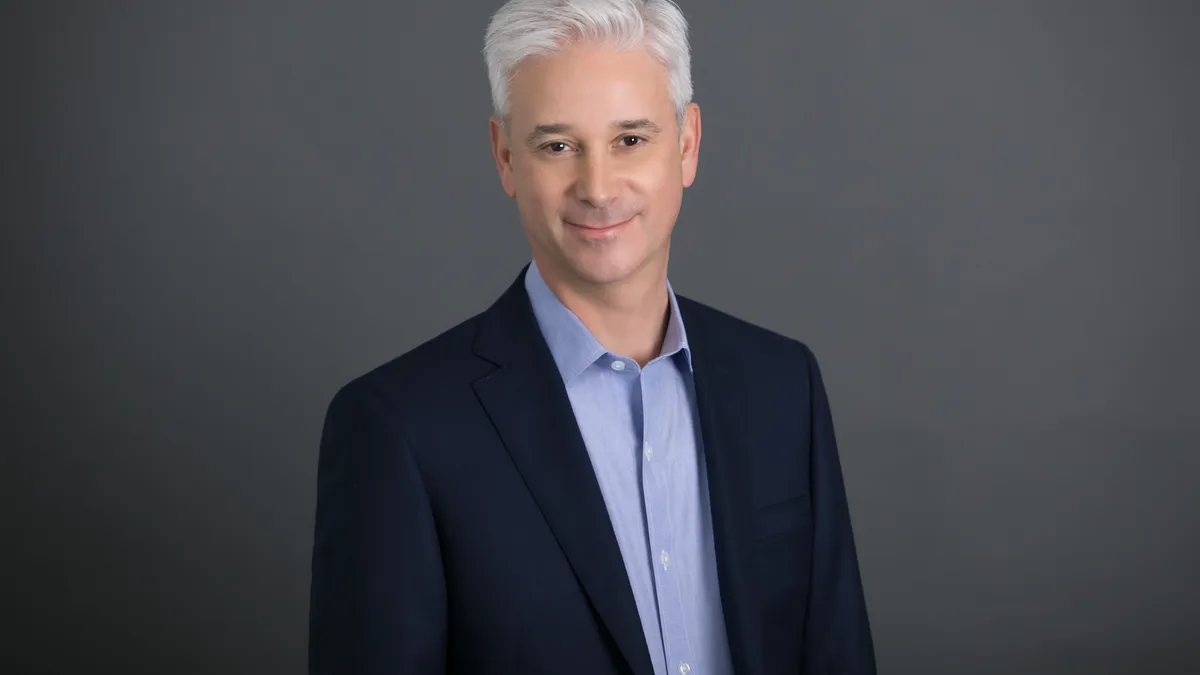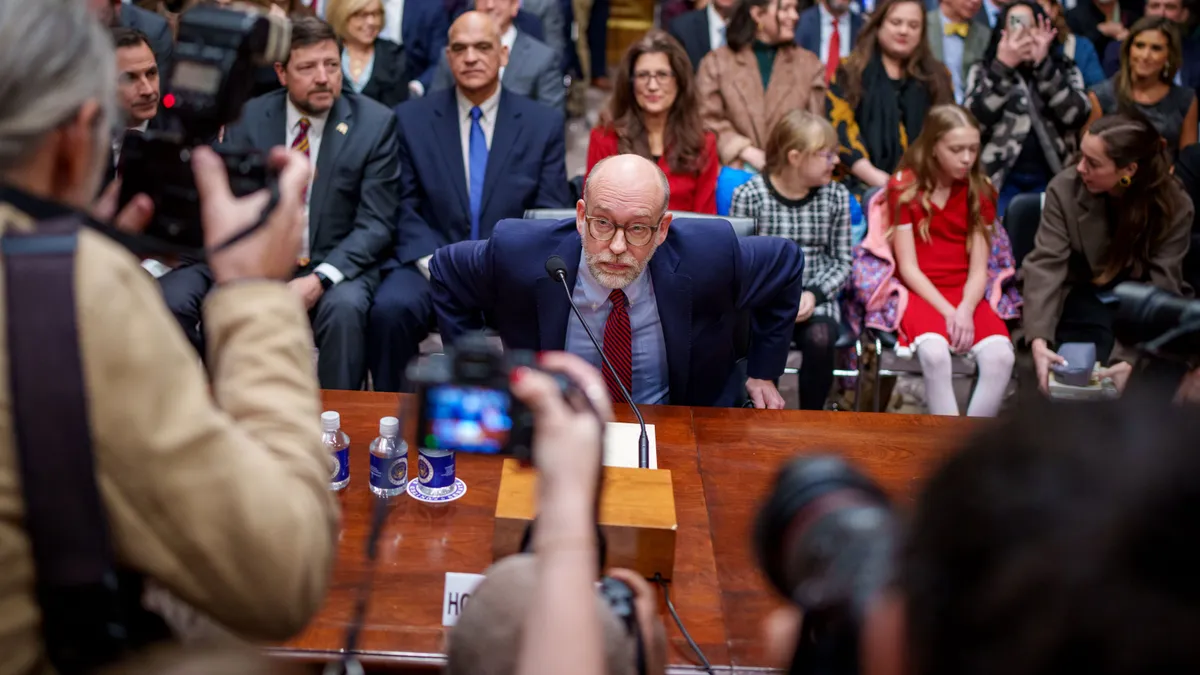Dive Brief:
- Wells Fargo operating committee members' efforts to increase representation and inclusion of diverse employees at the bank will be reflected in their year-end pay packages, CEO Charlie Scharf told staff in a memo Tuesday, according to Bloomberg.
- Scharf set a goal Tuesday to double the number of Black leaders at the bank within the next five years. He also said Wells Fargo would add a new diversity and inclusion-focused position reporting directly to the CEO. Black people comprise 6% of Wells Fargo's senior management, the wire service reported.
- The moves come as the May 25 killing of George Floyd has incited a swell of protests and awareness surrounding racial inequality. A number of financial institutions over the past week have said they're closing — or closing early — to let employees observe Juneteenth, which honors the belated announcement of the abolition of slavery.
Dive Insight:
Few of the top U.S. banks connect diversity goals to individual pay. Goldman Sachs last March said the bank's business managers would be judged by their ability to meet diversity goals and that the metric would be directly tied to determining compensation and promotions, according to Bloomberg. Citi uses representation goals among the non-financial targets it considers when deciding executive compensation.
Scharf on Tuesday vowed to add more Black people to the bank’s operating committee, but said Wells Fargo's "unique" regulatory issues may hinder his efforts. The bank has 12 public enforcement actions, including a $1.95 trillion asset cap imposed by the Federal Reserve, resulting from Wells Fargo’s well-publicized 2016 fake accounts scandal.
"The unfortunate reality is that there is a very limited pool of Black talent to recruit from with this specific experience as our industry does not have enough diversity in most senior roles," Scharf said.
Of the more than 80 top executives at the six largest U.S. banks, only Citi CFO Mark Mason is Black.
"Our progress will not be a straight line given the experience required in some of our roles, but I would ask that you judge our progress two years into my tenure as CEO," said Scharf, who took over Wells Fargo's top role in October.
Beyond the banking sector, it's still rare to see diversity goals tied to compensation. At least 3% of S&P 500 members include some form of diversity metric in their executive compensation plans, Bloomberg data showed.
But Jeanne Branthover, global head of financial services at headhunting firm DHR International, said more companies may follow Wells' lead.
"Change will happen if you tie it into someone’s compensation," she said.
------
UPDATE: Aug. 6, 2020: In the weeks that have followed the initial Wells report, Visa said it aimed to boost — by 50% in the next three years — the number of vice presidents or higher in the U.S. who are Black or Latin, CEO Al Kelly said in a blog post.
"Our top priority will be to transform our talent acquisition strategy and processes," Kelly said, adding that the payment network will establish a team dedicated to "attracting and sourcing top Black and African American talent, as well as top talent from other under-represented groups."
Additionally, the company said it will use new data to track diversity and inclusion and review it quarterly.
HSBC also said it wants to double the number of Black employees at the level of director and above by 2025, according to an internal memo seen by Reuters.
“The Black Lives Matter movement has rightly created more urgent demand for action,” CEO Noel Quinn said in the memo. “I want us to be judged by the concrete, sustainable actions we take to be a more diverse and inclusive bank.”
Goldman Sachs, meanwhile, said it wants 7% of its vice presidents to be Black and 9% to be Latino by 2025, CEO David Solomon wrote in a statement posted on the bank’s website and emailed to staff. The bank also aims for 40% of its vice presidents to be women.
“Progress on diversity will enhance our ability to execute our strategy and deliver for our clients,” Solomon said.
The benchmarks build on a goal the investment bank set last year: that 11% of the new analysts and entry-level associates it would hire in the U.S. would be Black. It also aimed for 14% to be Latino and half to be women.
The bank also pledged to double its hiring of analysts from historically black colleges and universities by 2025.
------
UPDATE: April 20, 2021: Forty-nine of Goldman Sachs' 1,548 U.S. executives, senior officials and managers — or 3.2% — identify as Black, according to a 2020 sustainability report. Sixty-six, or 4.3%, identify as Latinx.
The figure lays bare the work Goldman has yet to do to reach the goal it stated last August: a roster of vice presidents that is 7% Black and 9% Latino by 2025. The bank also aims for 40% of its vice presidents to be women. Women comprise 383, or 24.7%, of Goldman’s top 1,548 executives.
“There’s still a long road ahead, but I will continue to make this effort a personal priority,” Goldman CEO David Solomon wrote in the report, which also breaks down the racial makeup of the next tier of management — first-level and middle managers.
Black employees comprise 105 of the 3,411 managers in that tier, or 3.1%. Latinos comprise 171, or 5%. Women represent 1,148 of the tier, or 33.7%.
The numbers represent a slight improvement over 2019, when Black people comprised 2.7% of the top category, according to Reuters. Black people make up 6.8% of the bank's U.S. workforce, Tuesday's report showed. That compares with 6.6% in 2019, Reuters reported.














